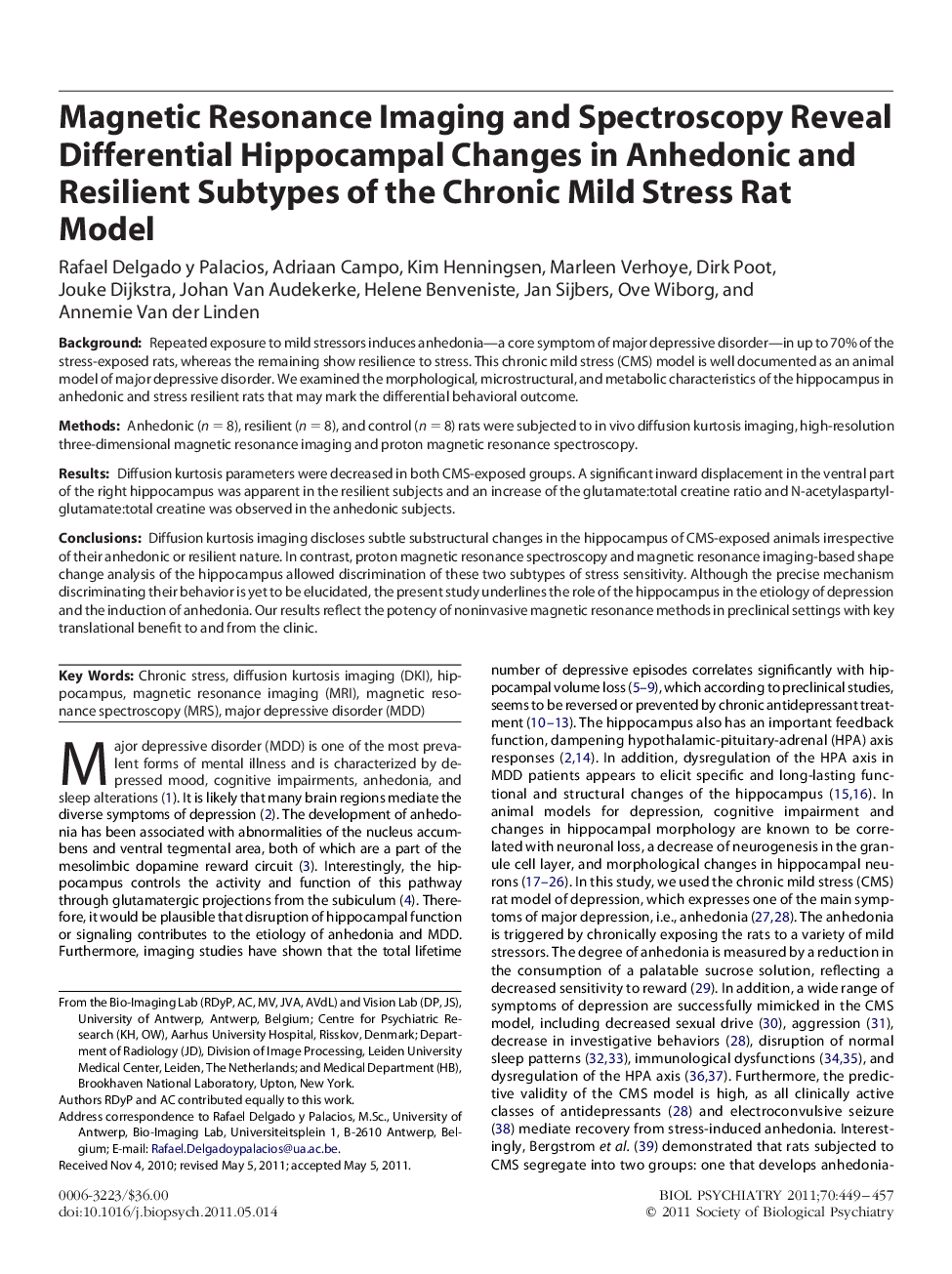| Article ID | Journal | Published Year | Pages | File Type |
|---|---|---|---|---|
| 4178430 | Biological Psychiatry | 2011 | 9 Pages |
BackgroundRepeated exposure to mild stressors induces anhedonia—a core symptom of major depressive disorder—in up to 70% of the stress-exposed rats, whereas the remaining show resilience to stress. This chronic mild stress (CMS) model is well documented as an animal model of major depressive disorder. We examined the morphological, microstructural, and metabolic characteristics of the hippocampus in anhedonic and stress resilient rats that may mark the differential behavioral outcome.MethodsAnhedonic (n = 8), resilient (n = 8), and control (n = 8) rats were subjected to in vivo diffusion kurtosis imaging, high-resolution three-dimensional magnetic resonance imaging and proton magnetic resonance spectroscopy.ResultsDiffusion kurtosis parameters were decreased in both CMS-exposed groups. A significant inward displacement in the ventral part of the right hippocampus was apparent in the resilient subjects and an increase of the glutamate:total creatine ratio and N-acetylaspartylglutamate:total creatine was observed in the anhedonic subjects.ConclusionsDiffusion kurtosis imaging discloses subtle substructural changes in the hippocampus of CMS-exposed animals irrespective of their anhedonic or resilient nature. In contrast, proton magnetic resonance spectroscopy and magnetic resonance imaging-based shape change analysis of the hippocampus allowed discrimination of these two subtypes of stress sensitivity. Although the precise mechanism discriminating their behavior is yet to be elucidated, the present study underlines the role of the hippocampus in the etiology of depression and the induction of anhedonia. Our results reflect the potency of noninvasive magnetic resonance methods in preclinical settings with key translational benefit to and from the clinic.
